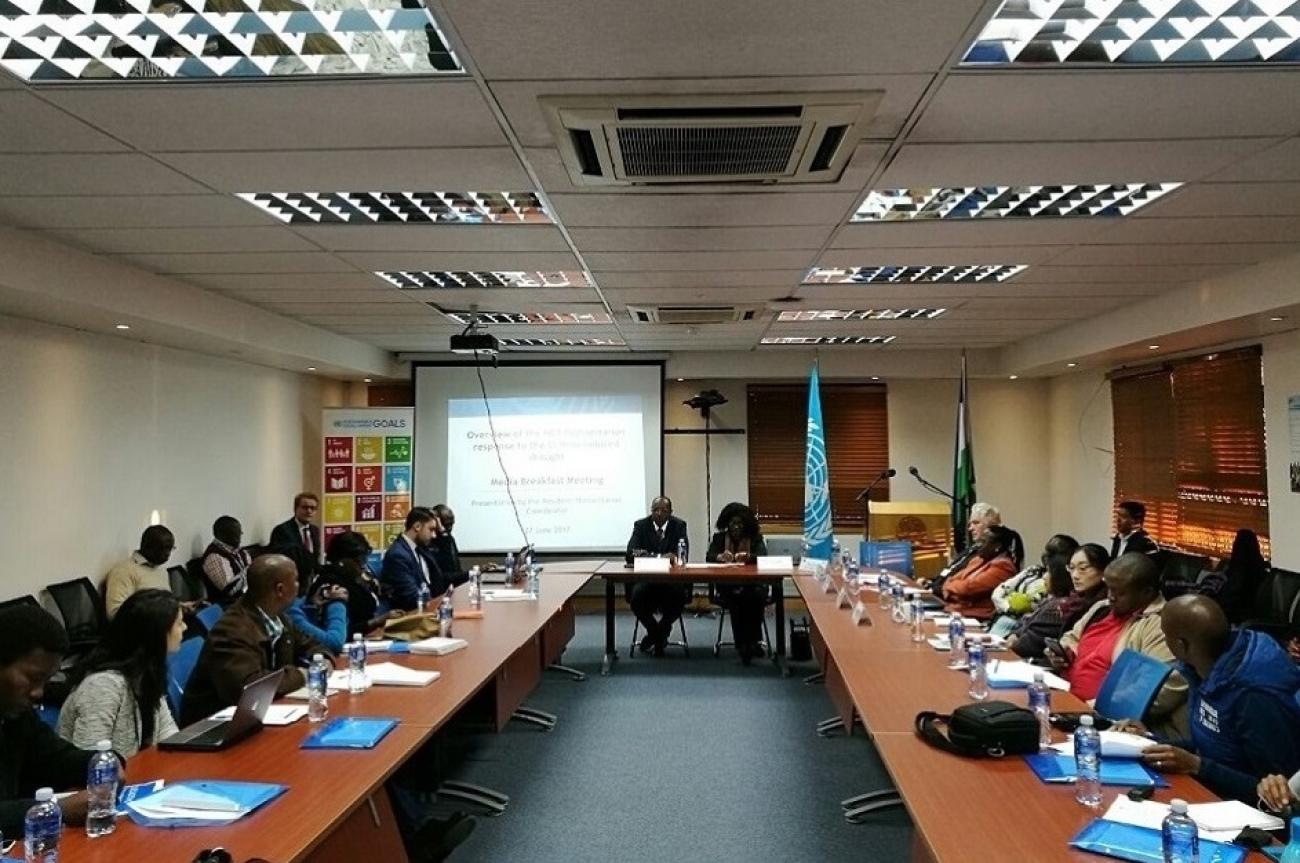The meeting was chaired by the UN Resident/Humanitarian Coordinator in Lesotho, Mr. Salvator Niyonzima, with participation of Heads of UN Agencies (FAO, WFP, UNICEF, UNAIDS, WHO, UNFPA), NGOs and national and international media representatives.
The 2015/2016 El Niño phenomenon in Southern Africa provoked the worst drought to have hit Lesotho in the last 35 years. As a result of the drought, Lesotho experienced poor and delayed rainfall seasons, a decline in the recharge of aquifers and springs, loss of livestock and widespread crop failure with a massive drops in food production.
On 22 December 2015, the Government of Lesotho declared a state of emergency, subsequently adopting a National Emergency Response Plan and appealing to the international community for urgent humanitarian assistance.
To support the efforts of the Government of Lesotho, the HCT partners mobilised USD 40.7 million up to June 2017. Most of the funding was directed to food security and agriculture interventions, to address the most urgent needs of the affected population. In the Southern African region, Lesotho has been amongst the countries that reached the highest funding against the financial requirements – 77% of the required response funding has been mobilised.
The drought response has been built on a number of complementarities between existing government schemes and humanitarian assistance. The complementarities between food security and agricultural interventions supported vulnerable households for the relief and recovery period.
A total of 466,563 people have been reached so far through humanitarian interventions by the HCT partners. The number of people living with a food security survival deficit decreased from 476,842 in May 2016 to 46,521 in November 2016. The emergency response is currently ongoing and is scheduled to continue until August 2017.
Regionally, the El Niño phenomenon officially ended in July 2016. The La Niña phase, which contributed to above normal rains in the period October 2016-March 2017, also ended. Normal rainfall and temperatures are expected for the period July-August 2017. Currently, the World Meteorological Organisation (WMO) estimates the likelihood for an El Niño phenomenon in 2017 at 50-60%.
The Media Breakfast will be followed by a Media Field Visit on Wednesday, June 28 to selected locations in Maseru, Mafeteng, Berea and Leribe districts to visit projects’ sites and to meet beneficiaries reached by HCT’s humanitarian programmes.
For more information, please contact:
Mr. Sergio Dinoi, Humanitarian Affairs Officer, UN Office of the Resident Coordinator
Mob: +266 58 94 76 96
Email: sergio.dinoi@one.un.org




